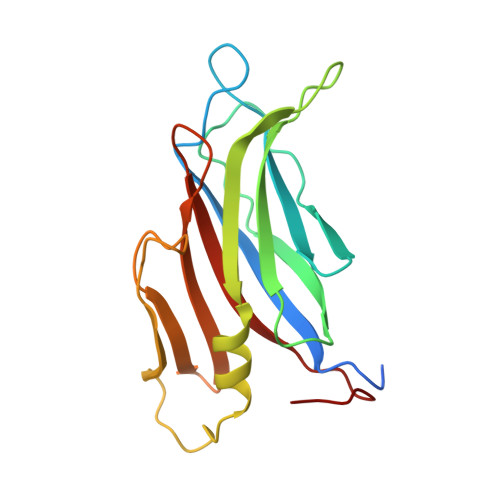C2-Domain Abscisic Acid-Related Proteins Mediate the Interaction of Pyr/Pyl/Rcar Abscisic Acid Receptors with the Plasma Membrane and Regulate Abscisic Acid Sensitivity in Arabidopsis.
Rodriguez, L., Gonzalez-Guzman, M., Diaz, M., Rodrigues, A., Izquierdo-Garcia, A.C., Peirats-Llobet, M., Fernandez, M.A., Antoni, R., Fernandez, D., Marquez, J.A., Mulet, J.M., Albert, A., Rodriguez, P.L.(2014) Plant Cell 26: 4802
- PubMed: 25465408
- DOI: https://doi.org/10.1105/tpc.114.129973
- Primary Citation of Related Structures:
4V29 - PubMed Abstract:
Membrane-delimited abscisic acid (ABA) signal transduction plays a critical role in early ABA signaling, but the molecular mechanisms linking core signaling components to the plasma membrane are unclear. We show that transient calcium-dependent interactions of PYR/PYL ABA receptors with membranes are mediated through a 10-member family of C2-domain ABA-related (CAR) proteins in Arabidopsis thaliana. Specifically, we found that PYL4 interacted in an ABA-independent manner with CAR1 in both the plasma membrane and nucleus of plant cells. CAR1 belongs to a plant-specific gene family encoding CAR1 to CAR10 proteins, and bimolecular fluorescence complementation and coimmunoprecipitation assays showed that PYL4-CAR1 as well as other PYR/PYL-CAR pairs interacted in plant cells. The crystal structure of CAR4 was solved, which revealed that, in addition to a classical calcium-dependent lipid binding C2 domain, a specific CAR signature is likely responsible for the interaction with PYR/PYL receptors and their recruitment to phospholipid vesicles. This interaction is relevant for PYR/PYL function and ABA signaling, since different car triple mutants affected in CAR1, CAR4, CAR5, and CAR9 genes showed reduced sensitivity to ABA in seedling establishment and root growth assays. In summary, we identified PYR/PYL-interacting partners that mediate a transient Ca(2+)-dependent interaction with phospholipid vesicles, which affects PYR/PYL subcellular localization and positively regulates ABA signaling.
Organizational Affiliation:
Instituto de Biología Molecular y Celular de Plantas, Consejo Superior de Investigaciones Cientificas-Universidad Politecnica de Valencia, ES-46022 Valencia, Spain.















